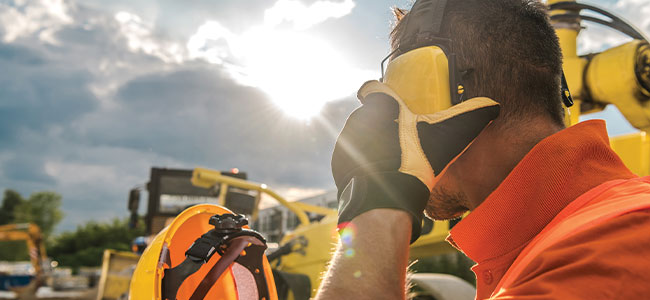
Improving Noise Monitoring and Your Hearing Conservation Program
From earplugs to personal headphones, it’s time to discuss the future of hearing protection in the workplace.
- By Tom Burgess
- Mar 01, 2024
Don’t underestimate the constant hum of equipment at your manufacturing facility or construction site — it’s more than just annoying; it’s also a serious safety hazard. Meeting the Occupational Safety and Health Administration’s (OSHA) standard of 85 decibels is only the beginning for employers. The nuances of workplace noise monitoring and hearing protection extend far beyond a simple numerical threshold, bringing forth challenges like fluctuating noise levels, identifying the appropriate personal protective equipment (PPE), and ultimately ensuring long-term worker protection.
At the heart of effective workplace noise management lies a deep comprehension of the dynamics of noise exposure, including understanding its cumulative nature. When assessing noise exposure, it’s important to remember that exposure limits are based on a time weighted average. Noise exposure is often not steady and can vary throughout the day and throughout the worksite. A worker might be exposed to loud noises in the morning but not in the afternoon, for example, emphasizing the need to assess day-long exposure.
Effectively mitigating noise-induced hearing loss begins with an accurate exposure assessment at the worksite. But a single decibel reading, captured at a singular moment, offers an incomplete picture. Data can be an unsteady foundation when decibels are involved. A standard type 2 sound level meter has an error range of +/- 2 decibels. So, an 84-decibel reading, below the OSHA hearing conservation limit, is potentially representative of a range between 82 and 86 decibels. While seemingly compliant with OSHA standards, such uncertainty is unacceptable for protecting the long-term health of workers.
While industrial sites and construction zones are commonly associated with high noise levels, the hard truth is that danger lurks in unsuspected corners. Maintenance teams with intermittent exposure to noisy pumps or compressors, custodians using powered equipment, or even seemingly innocuous settings like bustling kitchens, can all contribute to cumulative auditory damage. Some of these settings can be even more risky because workers and managers may be less aware of the potential threat and therefore less inclined to pursue protective measures.
Noise exposure does not solely reside in sustained decibel levels. Short bursts of intense noise, like a jackhammer’s roar or a jet engine’s scream, pack a potent punch that can overexpose workers even within a seemingly quiet workday. Furthermore, the insidious nature of hearing loss lies in its cumulative effect. Noisy evenings add to the workday’s burden, and the damage often manifests years later when older workers bear the brunt of past exposures.
This article originally appeared in the February/March 2024 issue of Occupational Health & Safety.